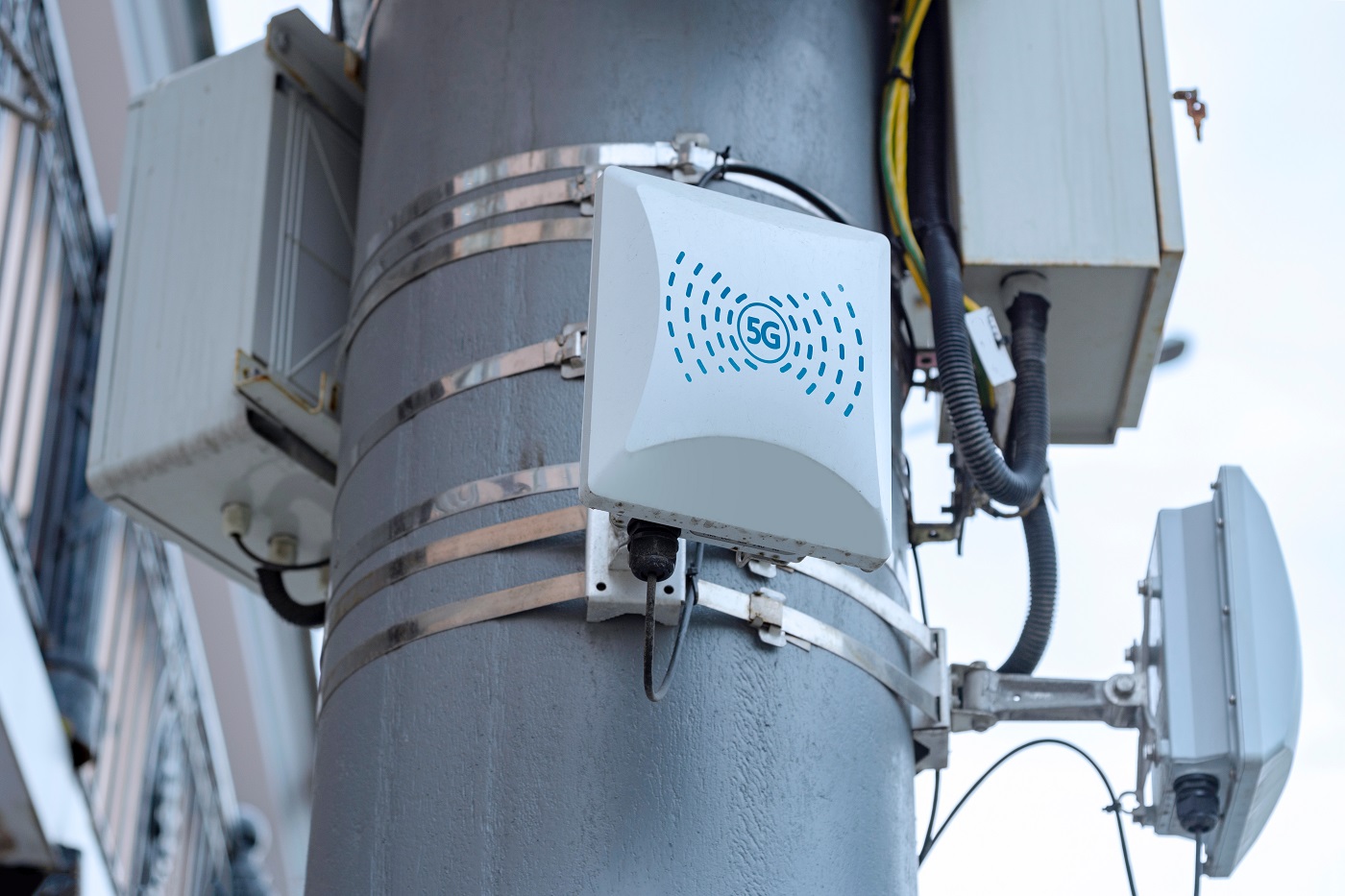
Contents
5G Small Cells
The cellular network growth has accelerated over the past few years and is expected to continue. Global mobile data consumption is set to increase from 65EB per month (2021) to 288EB per month (2027), with 5G networks responsible for 62% of the traffic (2027). The US market is currently estimated at 4.5 Million Terabytes per month (2021), and China alone is expected to reach 61 million Terabytes per month (2026), fueled by 4G and 5G adoption and increasing performance deployed networks. This incredible growth has driven service providers to establish the required infrastructure to support this need for high-data consumption.
Innovation is taking a giant leap and requires immediate, fast, and cost-effective deployments of base stations worldwide. According to Gartner, the worldwide 5G network revenue is currently valued at $19.1 billion. Gartner further states that 60% of communications service providers (CSPs) will commercialize 5G network services in Tier-1 cities by 2024.
In the 5G network era, the extensive smartphone user market has contributed to the hunger for more data streaming services, fueling the need for more data capacity and coverage. As per Gartner’s report, 5G smartphones accounted for 35% of the worldwide sales of smartphones. Thus having a single macro base station that covers a few miles’ radii is not sufficient for coverage or capacity, which results in an immediate need for expansion.
Operators can choose between densification by adding more base stations or more spectrum. Spectrum allocations helped in the 4G growth for wider bandwidth but aren’t a flexible or economical option. Thus network densification happened with the adoption of small cells and distributed antenna systems (DAS), leading to the initial 5G network arena to help improve capacity at increased speeds (up to 100 MHz per second) in some areas. According to Gartner, regions including Greater China, mature Asia/Pacific (APAC), Japan, and North America will be responsible for 95% of 5G coverage across the global population by 2023.
Further streaming requirements, automation, industrial use of the wireless network, need for mobile broadband, low latency, quality of service, and reliability have expanded the need for data capacity and coverage.
What are 5G Small Cells?
Small Cells and 5G: 5G small cells are base stations that cater to a small segment of a macro site. They are usually deployed in dense urban areas such as downtown, stadiums, train stations, malls, and areas with high data capacity requirements and coverage.
Macro base stations have penetration issues indoors, significantly when metallic structures obstruct the network signals. Thus the need for coverage indoors and in large venues like stadiums is prevalent, where capacity is a significant issue – that’s where small cell systems play as the leading solution.
Under the 5G small cell umbrella, one will find the following cell types:
1. Femtocells – 0.001-0.25 (W) output power & 0.010-0.1 (km) cell radius
2. Picocells – 0.25-1 (W) output power & 0.1-0.2 (km) cell radius
3. Microcells – 1-10 (W) output power & 0.2-2.0 (km) cell radius
4. Macrocells – 10 to >50 (W) output power & 8-30 (km) cell radius
5G Small Cell Use Cases
Small Cells and 5G: Where are 5G small cells deployed? Let’s look at some of the small cells’ use cases or deployment scenarios below:
1. Carrier Outdoor
One can see 5G small cells in downtown areas at street level on light posts or the side of a building. It’s for outdoor coverage in highly urban areas, wherein you do have macro cell coverage. Although due to high obstructions, there’s not enough penetration of signals. Especially in geographical regions where deep densification of macrocells is not as much, like in North America or Europe, compared to China (due to 5G spectrum licensing and regulation issues, apart from pricing.)
2. Carrier Indoor
Indoor small cells are deployed in public areas such as malls, stadiums, and train stations. It is where most small cell deployments happen because of the limited penetration of macrocell signals indoors. Most of the data consumption happens indoors with smartphones and people’s ability to stream videos from anywhere. A recent Gartner report states that indoor 5G coverage is responsible for over 80% of data consumption. Thus these public areas are excellent venues to deploy small cells.
3. Enterprise
Enterprise small cells are used in industrial manufacturing sites or even private LTE networks that specific customers use for applications such as mining. They need a dedicated network to monitor everything that happens at their site. These are very high-quality service requirements situations. According to Gartner, 60% of CSPs will be able to deliver superior broadband connectivity to residential and business users by 2025.
4. Residential Femto
These are simple plug-and-play systems that individuals can self-install inside their house or share between households. They have been quite popularly deployed in the early parts of small cell ramp-up, but the focus is moving towards enterprise and carrier indoor. As per recent data, most of the revenue share has been taken up or generated by carrier indoor, and carrier outdoor is next in line. At the same time, the enterprise’s small cells are growing because of the different use cases mentioned above.
5G Technology: What are the Limitations of Wifi?
Wifi is an option, say for a household, where they have the option of Wifi as opposed to an LTE network, which is limited. Using Wifi in places such as enterprise applications and manufacturing sites or even in office spaces is not a reliable solution. Using a network that uses unlicensed bands is not preferred in applications where users need quality of service. You cannot afford any downtime or repair time where you suddenly lose network and cannot monitor all the equipment they use. According to Gartner, private 5G networks will be one of the key emerging technologies in the next few years, providing more control to private operators.
Manufacturer Challenges for Small Cell Radio
5G Technology: Four main aspects are required to successfully deploy a small cell system, as mentioned below:
1. Small Size and Low Weight: As mentioned earlier, small cells are deployed in infrastructures that already exist at street level, such as light poles or inside of a building; thus, they can’t be huge, such as a tower that needs to be placed to support the structure.
2. High Reliability and Robustness: It’s important because there are different deployment scenarios. It could be outdoors, in-between buildings, where there is a vast signal reflection, signal bouncing back into the antenna, so the radio frequency (RF) content itself could be looking at high reflections and multiple data paths. Under such conditions, it should be able to survive and be eligible to provide the required service. So it needs to be highly robust, not just the radio frequency (RF) content but the box itself. Depending on which geographical region, and atmospheric conditions, all of these are important. Reliability is the other requirement. Densification is a key for small cells, which means deployment will happen at every street corner. In case of a failure, the failure rate could add up, given the number of deployments. That is why the need to manufacture these reliably, which can minimize the number of failures or defects, is of paramount importance for the manufacturer.
3. Power Efficiency: Being small in size and weight, and at the same time, the power consumption also ties up into the requirement for deployment in areas with limited access to power. It means that sharing will happen with other existing networks or equipment. Thus small cells need to be highly efficient to operate as expected.
4. Time to Market: A small cell arena is a very agile market with multiple players trying to grab a share. Hence, the need to deploy fast and reliably is essential to the manufacturers.
Small Cells and 5G – Design Challenges
- Increased number of bands
- Increased bandwidth to increase radio capacity
- Coexistence between bands and standards
- -3 dB increase in average output power
- SWaP (reduce the size, weight, and power consumption)
Small Cells and 5G – Radio Frequency (RF) Front-End Solutions
- Full portfolio of front-end products covering all regions and bands, including sub-6 GHz
- Wider bandwidth front-end PAs and LNAs, supporting 5G and 5G signal bandwidth
- BAW filtering for better band separation
- Power scalable high-efficiency PA
- PA with high PAE and gain in small form factor, DPD capable for greater linearity, and LNA w/bypass for gain control
The deployment of 5G small cell infrastructure will help enable a smooth network evolution with a higher frequency 5G radio spectrum. Since the 5G commercial networks are live globally, operators have prioritized the need to provide spectral efficiency and improve user experience in hotspot areas. The next generation of LTE and 5G small cells will have to meet new market expectations for enhanced Mobile Broadband (eMBB), massive machine-type communication (MTC), and ultra-reliable low-latency communication (URLLC).
The industry accelerates, with Open RAN and vRAN gaining momentum, especially amongst small cell service providers. Hence the opportunity arises to transition to a state-of-the-art virtualized architecture, where STL steps in.
Gartner has recognized STL Tech in the ‘2022 Competitive Guide for 5G Small Cell Equipment Vendors’ list. As per the statement, STL has a “high degree of visibility and traction in the CSP 5G small cell market, which continues to impact their GTM strategy and competitiveness”. STL offers an open and virtualized RAN solution for enterprises with a compact design, easy field set-up verification, optimum power consumption, and cost-effective systems.












